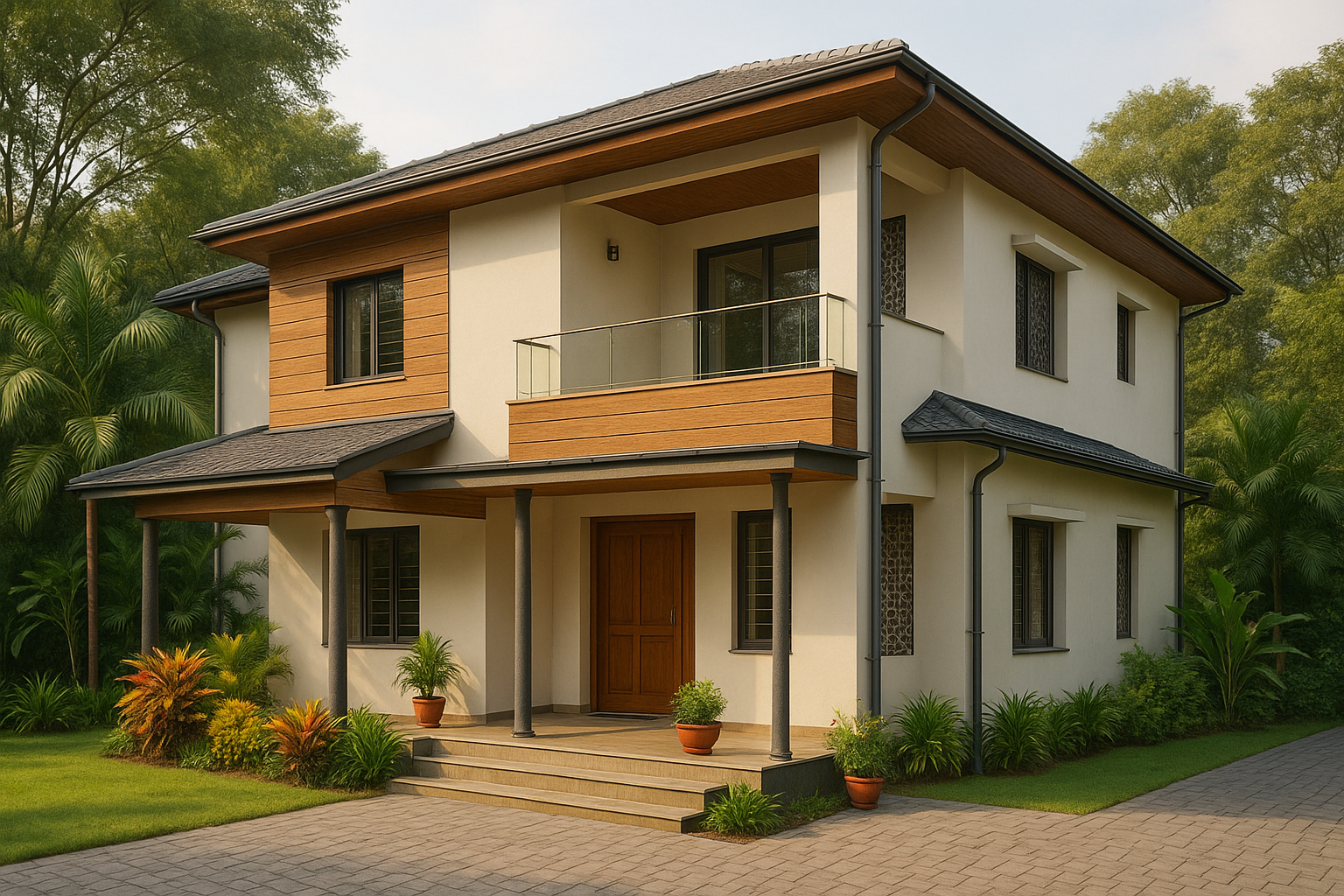In an era where sustainability is no longer optional but essential, the construction industry is undergoing a major transformation. Architects, builders, and developers are constantly seeking materials that not only perform well but also align with green building practices. High Pressure Laminate (HPL) sheets are emerging as the perfect answer to this need — blending eco-friendliness with aesthetic appeal.
Let’s explore how HPL sheets offer a stylish, sustainable solution for modern construction — both interior and exterior — without compromising on design or durability.
♻️ What Makes a Building Material Truly Sustainable?
Sustainability isn’t just about being recyclable. A truly sustainable material:
- Has a low environmental impact during production
- Is durable and long-lasting, reducing replacement waste
- Supports energy efficiency in the built environment
- Is non-toxic and safe for indoor air quality
- Comes from responsibly sourced raw materials
HPL sheets, especially when sourced from eco-conscious manufacturers like HPLMaker, check all these boxes — and do so with unmatched versatility and visual appeal.
🌍 What Are HPL Sheets Made Of?
HPL (High Pressure Laminate) sheets are made by pressing multiple layers of kraft paper impregnated with phenolic resins, topped with a decorative paper layer, and sealed under high heat and pressure.
Now here’s the sustainable twist:
- The kraft paper used is often FSC-certified (sourced from responsibly managed forests)
- The resins and adhesives are evolving to become low-VOC and safer for the environment
- The production process is optimized for minimal energy and water usage
🍃 How HPL Supports Eco-Friendly Construction
Let’s break down the ways HPL contributes to sustainable architecture and green-certified buildings.
✅ 1. Low Emissions, Healthier Interiors
Indoor air quality is a critical factor in eco-friendly building certifications like LEED, IGBC, or GRIHA. HPL sheets are:
- Low in VOCs (Volatile Organic Compounds)
- Free from harmful formaldehydes and toxins (when made to international standards)
- Resistant to mold, mildew, and bacteria — ideal for health-focused interiors like hospitals, schools, or homes
✅ 2. Durability Means Less Waste
One of the most overlooked aspects of sustainability is longevity. The longer a product lasts, the less often it needs replacement — which means less manufacturing, less transport, and less waste.
HPL sheets are known to last 20–25 years or more without fading, cracking, or warping. This makes them perfect for exterior façades, high-traffic interiors, and commercial applications where wear-and-tear is unavoidable.
✅ 3. Recyclable and Reusable
While HPL is a thermosetting material (not melted and reshaped), many manufacturers now ensure:
- Post-industrial scrap reuse during production
- Panels that are recyclable as composite fuel
- Leftover sheets from one project can be repurposed for partitions, signage, or furniture
✅ 4. Energy-Efficient Design Aid
Exterior HPL sheets help reduce solar heat gain on building façades. Their UV-resistant surfaces and ability to reflect heat reduce reliance on air conditioning — indirectly supporting energy-efficient buildings.
Pair HPL with ventilated cladding systems, and you enhance thermal insulation, keeping interiors naturally cooler.
✅ 5. Green Certifications and Documentation
Top-tier brands like HPLMaker provide:
- Environmental Product Declarations (EPD)
- GREENGUARD and FSC certifications
- Compliance with EN438 and ISO14001 standards
This makes it easier for builders and architects to secure green building credits and meet local or global eco-norms.
🎨 Stylish Sustainability: Where Aesthetics Meet Eco-Friendly
Sustainability isn’t boring anymore. With HPL sheets, you don’t have to choose between beauty and eco-consciousness.
Choose from a wide range of:
- Wood grains that replicate natural timber without cutting a single tree
- Stone or metal finishes that eliminate the carbon footprint of mining
- Minimalist and contemporary tones perfect for modern architecture
- Custom textures for branding in retail, hospitality, or commercial spaces
From stylish office walls to wood-finish exterior cladding, HPL empowers design with a conscience.
🏢 Real-Life Applications of Sustainable HPL Sheets
Where can HPL contribute to eco-friendly design?
🏫 Educational Institutes
Durable, toxin-free surfaces ideal for safe, long-term use in classrooms, labs, and libraries.
🏥 Healthcare Facilities
Anti-bacterial, easy-to-clean panels that support hygienic design and safe indoor environments.
🏢 Office Interiors
Helps achieve green certification goals while delivering sleek, professional aesthetics.
🏨 Hotels & Restaurants
Create natural-looking, Instagram-worthy décor with minimal environmental impact.
🏠 Eco-Friendly Homes
From wardrobes to kitchen cabinets, HPL gives homeowners a durable, green-friendly choice.
🧱 Final Thoughts: Build Smart, Build Green
As we face rising temperatures, pollution, and resource scarcity, every material choice matters. HPL sheets offer the ideal blend of function, beauty, and sustainability, making them a smart investment for the future.
They allow architects and builders to design responsibly, reduce environmental impact, and still deliver stylish, durable results. And with brands like HPLMaker leading the way in green innovation, making the switch has never been easier.
So whether you’re revamping a retail store, designing a luxury hotel, or building your dream eco-home—
Think smart. Think sustainable. Think HPL.


